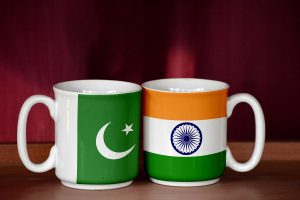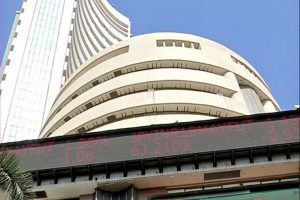Has the Modi government lifted India’s economic fortunes during its ten years in office? We know that India has become the fifth largest economy. Most people agree that India would become the third largest economy by 2026 or 2027. This is interesting because in its last year, the UPA government had set a target of reaching this point only by 2043. So what changed? Between 2004 and 2014, India saw hardly any change in its economic rank. We remained stuck between 10th and 12th place.
But take the other BRIC countries, for instance. Both Brazil and Russia had economies smaller than India in 2004. By the end of the UPA years, both countries had leaped ahead of India. The most alarming was the rise of China. In 2004, India’s per capita GDP was 40 per cent that of China. By 2014, this was nearly cut in half, reduced to just 20 per cent. But these are still anecdotes. In the last twenty years, how has India performed compared to other developing countries? For this, we need a deep dive into the GDP per capita data. So here is a graph showing India’s per capita GDP compared to all the 150 or so countries that the IMF classifies as emerging economies.
Advertisement
This basket includes China, the BRIC economies, and almost all the countries in South America, the Middle East and Africa. We notice two things right away. During the UPA years, the trend is mostly downwards, while the trend in the Modi years is clearly upwards. Indeed in 2004, India’s per capita GDP was about 35 per cent that of the developing world. By 2014, this had shrunk to just 30 per cent.
This confirms that India fell behind other emerging economies in the UPA years. In contrast, it rose from 30 per cent in 2014 to 41 per cent in 2024. This shows that India performed better than other developing countries in the last ten years of the Modi government. The graph also allows us to compare the performance of the two governments during times of global economic crisis.
The graph plunges sharply in 2008. This shows that India was actually hit harder than other emerging countries during the 2008 crisis. On the contrary, the graph is flat during the pandemic of 2020-21. This means that India did about the same as other countries when the world was hit by the coronavirus. We can now do a simple computation. What if India had kept up with other emerging countries during the UPA years? How much more would we have? Take for instance the year 2013. Between 2004 and 2013, emerging nations went from $1790 per capita to $5050 per capita.
In the same time, India went from $624 per capita to $1440 per capita. But if India had grown at least as fast as other emerging countries, we should have had $1760 per capita. That means a “loss” of about $320 per Indian. Multiply this by India’s population (about 1.29 billion in 2013) and we have $413 billion in lost GDP for that year. Because one dollar in 2013 is worth about $1.35 today, the lost GDP for 2013 works out to $557 billion! If we repeat this calculation for every year between 2005 and 2014 and add up, we get a figure of $2.487 trillion. This is the total loss to India’s economy in the UPA years, caused by falling behind the rest of the developing world.
Finally, let us look at the Modi years. Between 2014 and 2024, emerging nations went from $5140 per capita to $6700 per capita, while India went from $1560 to $2730. So if India had grown at the same pace as the others, we would have only $2033 per capita. This time, we have a gain of $697 per Indian. Multiply by population and this adds $997 billion to India’s GDP. Nearly one trillion dollars, just for 2024. If we do this for every year between 2015 and 2024, we get a total of $6.533 trillion. We could call this the “Modi surplus.” The numbers speak for themselves.
(The writer (@AbhishBanerj on “X”) is an author, columnist and a faculty member at Indian Institute of Science, Bangalore. The views expressed are personal.”)











